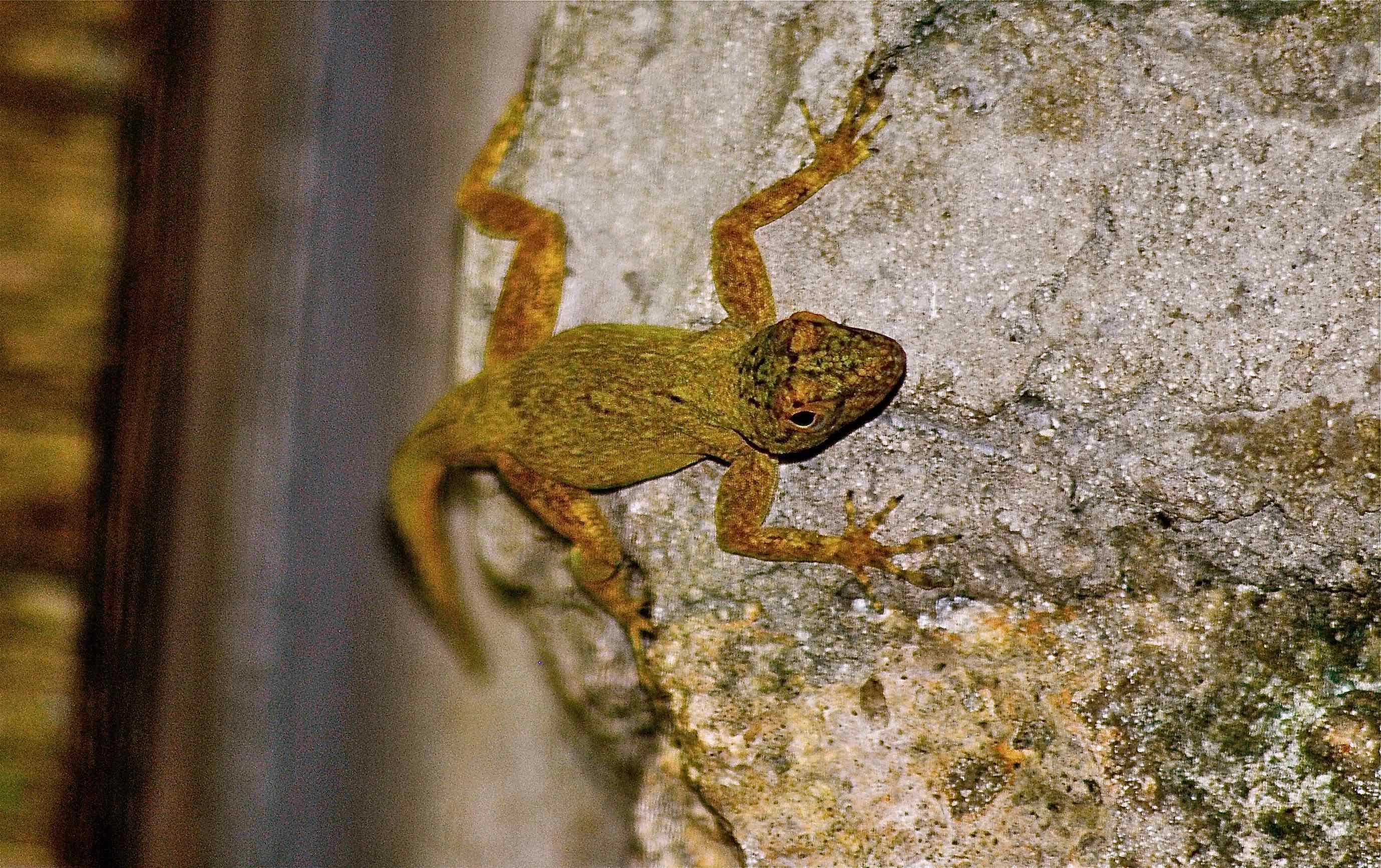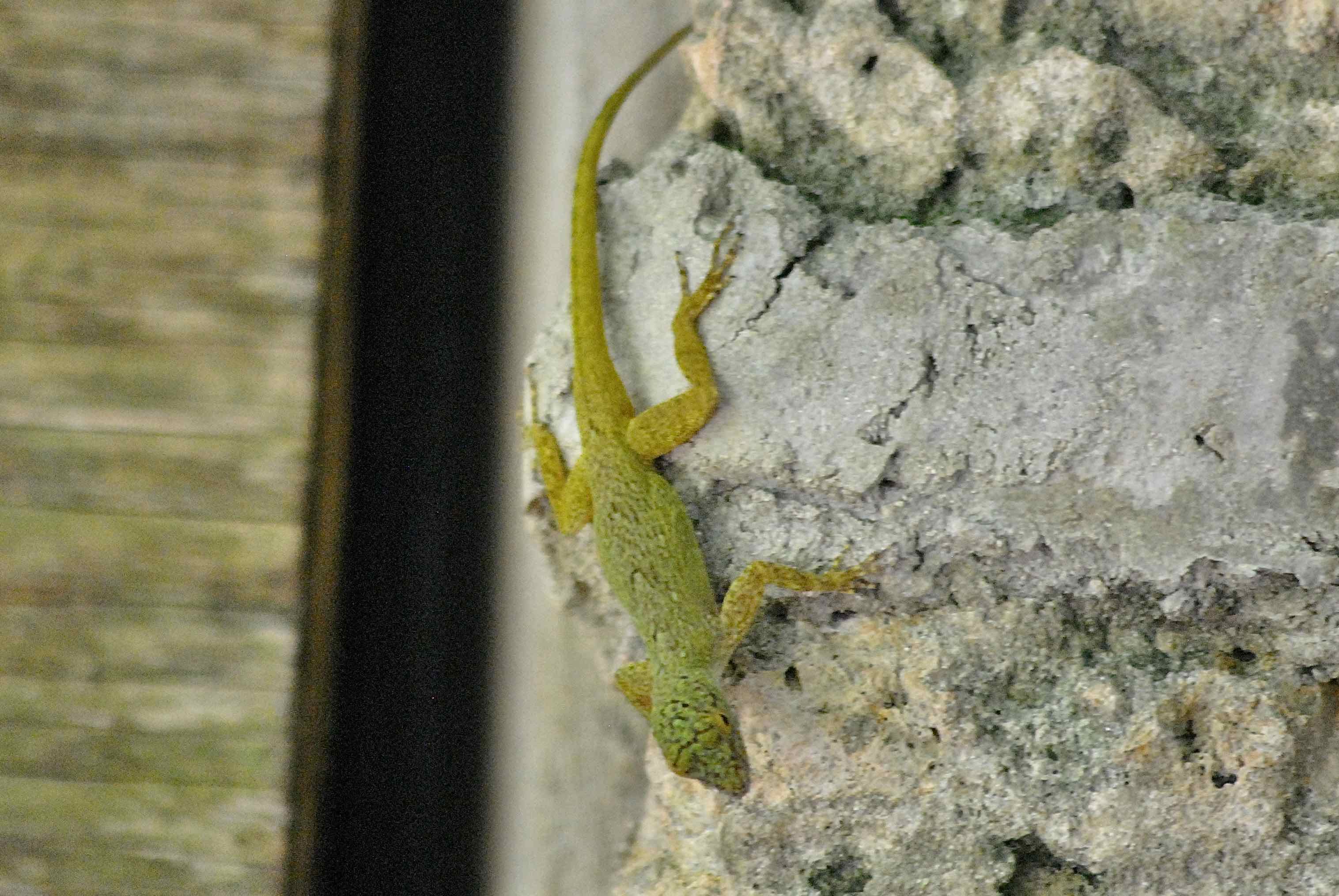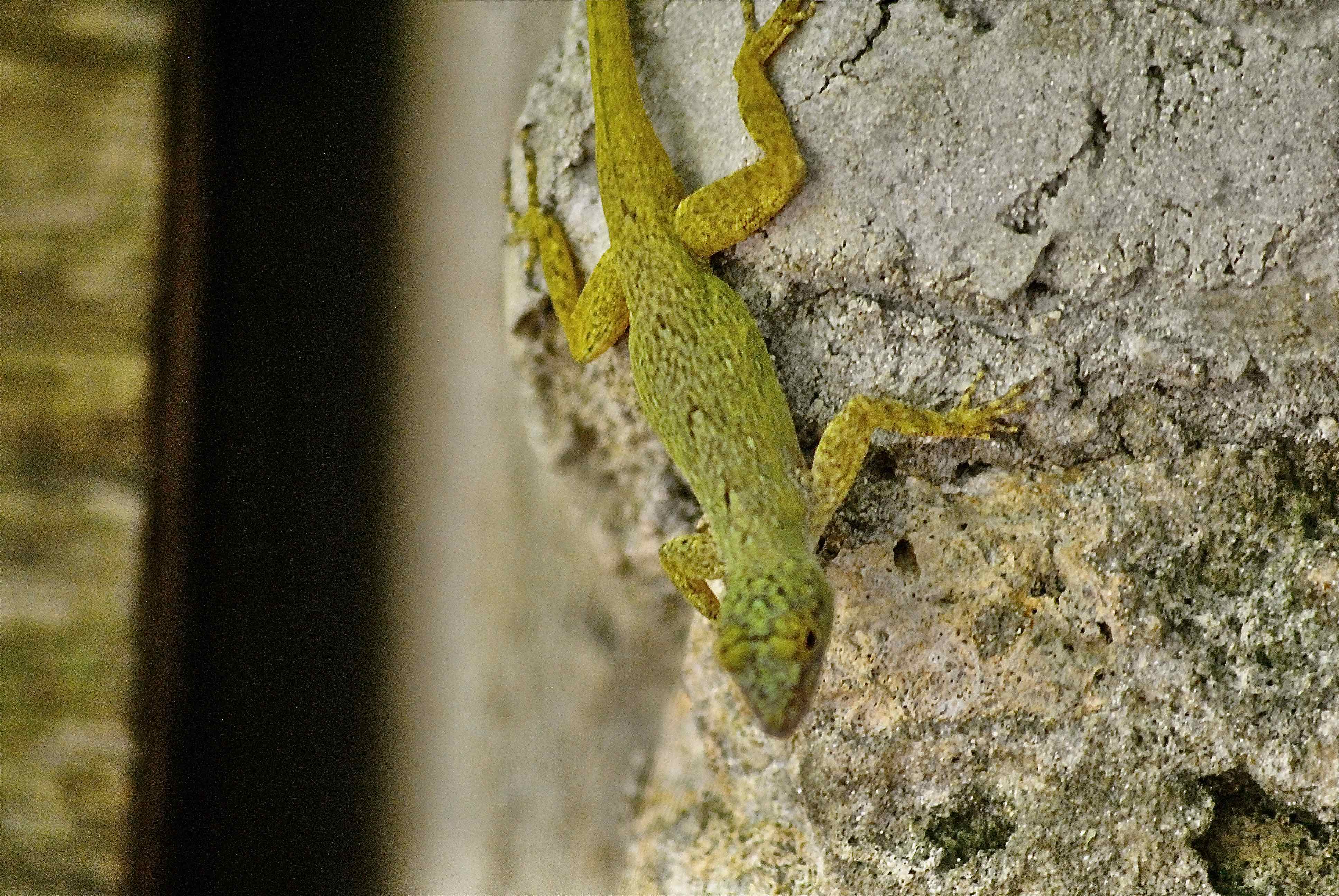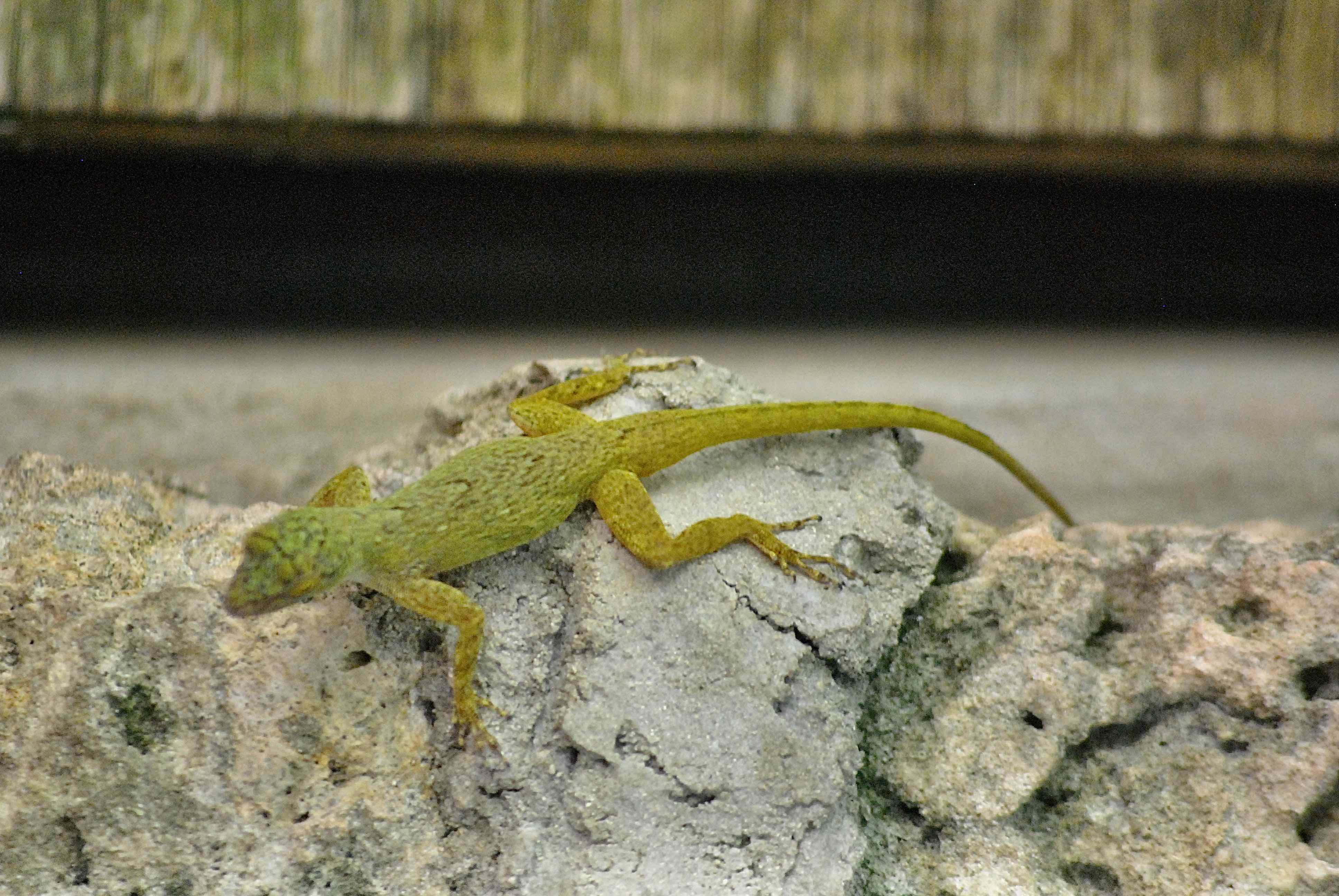
Bark anole, photographed at Tropical Park, Miami, Miami-Dade County, in July 2015.
There are eight species of anoles found in Florida. Only one, the green anole, Anolis carolinensis, is native to the state. We bring this up to illustrate how dominant nonnative lizard species have become in Florida.
Which is our way of introducing this little nonnative, Anolis distichus, the bark anole. Unlike too many of its imported cousins, the bark anole is relatively benign, or so it seems. At least no one is kicking up a storm as to the need to rid our state of the bark anole.
How and when it got here is a bit obscure. As to how, there are the usual posibilities: it came here as a stowaway on a ship at one of Florida’s many ports of entry and made its way into the wild, or it was brought in as a pet and either escaped or was deliberately set free by its owner.
Bark anoles are natives of Great Bahama Island in the Bahamas. From there it was introduced onto other islands in the chain, and to Hispaniola, the island split between Haiti and the Dominican Republic. According to most folk, Florida’s bark anoles came to the state by way of Hispaniola. Again, how they got here isn’t clear.
There are also records of bark anoles found in Central America and South America, plus other islands in the Caribbean. According to the Global Invasive Species Database, there are no records of bark anoles becoming an environmental problem anywhere, including Florida.
And speaking of the Sunshine State, bark anoles are mostly found in Miami-Dade and Monroe counties, but there is a vouchered record (scientifically verified) of it as far north as Port Salerno in Martin County dating to 2018 and West Palm Beach in Palm Beach County. There are unofficial records of bark anoles in Martin from the late 1990s.
They’re small lizards, going about five inches long, males a little bigger than the females. They’re also variable in color, ranging from tan to darker browns, grays, greens and yellows. They can also be a marbled mix of those colors. And they can change colors, depending on the background. One indication of how variable bark anoles can be: the Global Invasive Species Database lists 10 synonyms — different species names and subspecies. That's a pretty good indication that naturalists studying the bark anole thought they had found something a little different than the standard bark anole.
The dorsum, or back, may show four dark chevrons (sergeant’s stripes); the dulap — the expanding part of the throat — are a mix of reds and greens, but like everything else with this lizard, they’re variable. It can even be white.
Bark anoles are tree-dwellers. They make their living picking off small insects from the outer bark of tree trunks and branches.
Circling back to the theme at top of this page, there are records of 150 exotic lizard species found in Florida, including the bark anole. The majority make their way here as pets Most don’t establish breeding populations here, but too many do.
Bark anoles are also known as north Caribbean bark anoles. They are members of Iguanidae, the iguana family.



